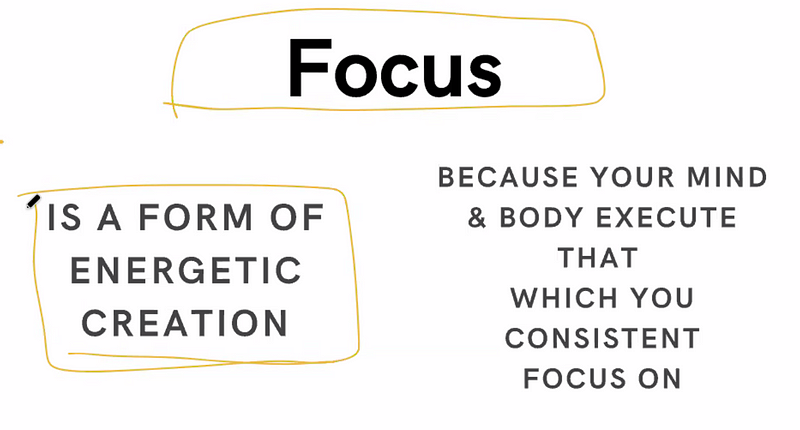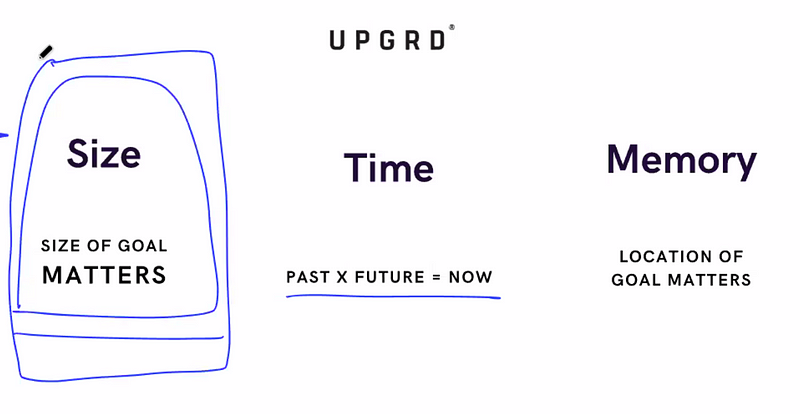Unlock Your Potential: Become a Gravitational Force in Life
Written on
Chapter 1: The Mind as Your Operating System
In a world often characterized by fragmentation, I continuously seek methods to restore a sense of wholeness—harmonizing my mind, body, and spirit. One innovative tool that has emerged is UPGRD, a life-design framework created by William Lam, which serves to enhance our mental capabilities. This system functions like software; it requires regular updates to replace outdated patterns.
In this piece, I will explore the mental upgrade strategies based on Lam's teachings that guide us towards a superior quality of life. Our brains, after all, are akin to supercomputers—simply click 'Software Update' in your mental settings.
The Quest for the Ideal
During a four-hour Mastermind session, Lam highlighted the pitfalls of modern quests for fulfillment. In our search for 'the one'—whether it be a partner, career, or personal satisfaction—we often become ensnared by the very pursuit, questioning how our desires will manifest. Lam emphasized the importance of stating the “when” and identifying the “evidence” that we have indeed attained our goals.
In our endeavors, Lam encouraged us to think both broadly and specifically:
- When crafting a life vision: List out 85 qualities you desire.
- For relationships with clients, employees, or friends: Narrow it down to 25.
Next, we tackled the concepts of goals versus states, which can be easily understood. As an entrepreneur, my focus is on generating wealth, managing time, and seeking fulfillment. While financial success is a goal, happiness represents a state of being. We debunked the myth that “money can’t buy happiness,” recognizing that while money is a goal, happiness is a choice that can be made regardless of financial status. It is a state we engineer rather than a condition we find ourselves in.
Section 1.1: Designing Our Lives
Influence is not an accident; it is a skill developed through our ability to create successful outcomes and happiness. Lam, with his background in computer science, provided a logical framework:
- Define Your Desires: Concentrate on your goals and desired emotional states.
- Remove Obstacles: Identify and eliminate outdated programs that no longer benefit you. But how? Create appealing alternatives that inspire change and establish a compelling need.
- Map Your Mind: Uncover the “source code” that governs your decision-making within the constraints of your old mental framework. This includes crafting a decision tree to navigate problems and solutions.
- Rebuild Decision-Making: Transition to making choices that align with your new mindset, facilitated by the UPGRD system.
- Implement Your Design: Activate your new software.
- Evaluate: Assess whether your system effectively meets your goals and desired emotional states.
- Refine: Repeat the process to enhance your thinking and steer your life path with precision.
Designing our lives requires us to discard old mental programs to embrace new ones. However, Lam cautioned that “humans will defend old beliefs until they encounter something more appealing—a new program.” While the old framework feels safe, it is often predictable and limiting. “Safety does not always equate to goodness,” Lam noted, particularly in relation to detrimental habits.
The mind acts as an “asset manager,” capable of making informed choices based on risk and reward. We desire rewards that outweigh the risks, prompting the mind to recalibrate towards new avenues. According to Lam, “When sufficient rewards and incentives are present, the mind is compelled to unlock.”

The Power of Focus
Our minds possess incredible creative power. Typically, we utilize only 3–5% of our conscious capacity, but what could we achieve if we expanded that? There are latent abilities within us that we may not yet recognize. Thus, it’s essential to aim high.
One method Lam proposed for unlocking this potential is through deep focus—an energetic practice that translates our thoughts into reality. This type of creation hinges on the clarity and intensity of our focus. To manifest our aspirations, we must concentrate on visions that inspire us to take action.

Beyond Visualization
Conventional visualization often falters because it is approached from a first-person viewpoint, leading our minds to mistakenly believe our goals have already been achieved. A more effective method, according to Lam, is to adopt a third-person perspective. This shift can trigger genuine change and motivate action by providing essential psychological distance.
Effective Visualization Strategy:
- Use a first-person perspective to amplify the intensity of the emotional experience. Visualize rewards as if they are happening to you.
- Once this is ingrained, switch to a third-person viewpoint to observe yourself achieving your goals.
- To maintain motivation, retain the third-person perspective; if you feel unprepared, revert to first-person. This oscillation embeds your thoughts and emotions into your subconscious.
- Continue this practice until the desired state becomes instinctive and no longer demands conscious effort.
Remember, the present is a holographic projection that intertwines elements of our past and future. Given that our bodies operate as holographic systems, it’s vital to note that memories are stored in specific bodily locations.

Memory Storage and Burnout
We engaged in a memory exercise, revisiting the highs and lows of our experiences. When negative memories arise, where do we perceive them—in the heart, gut, or head? Reflecting on burnout, Lam indicated that fatigue often results from an imbalance between input (work) and output (reward). Essentially, if our efforts exceed our returns, we experience a breakdown. This principle also applies to procrastination, where misaligned incentives lead to discomfort and inaction.
Lam’s insights resonated with my experience of burnout. In the fall of 2018, while overseeing an international media firm, I was suddenly struck by intense pain in my kidneys. The stress of navigating the company's direction, dealing with a cyber breach, and the pressure to recover lost files became overwhelming. Disputes with the founder regarding our path only heightened my anxiety. I reached a point of mental paralysis, unable to envision positive outcomes or new goals. My internal narrative shifted from that of a protagonist to a passive observer, unable to see a way forward.
As Lam concluded, leadership—like alchemy—demands that we integrate our inner selves, nature, and the divine. To be in alignment means channeling our energy toward creative pursuits. An effective leader directs this energy toward opportunities, fostering success for themselves and others. This alignment is the “natural way,” a gravitational influence nurtured within a supportive environment. We thrive with those who resonate with us and flow with the current, rather than against it.
Key Takeaway
By upgrading our mental operating system, we can reshape our inner worlds to align with the lives we desire, thus achieving a state of flow and effectiveness that surpasses ordinary limits. This transformative journey of mental reprogramming extends beyond mere success; it elevates the quality of our life experiences, empowering us as masters of our destinies.
Through deliberate mental upgrades, refined goals and emotional states, and enhanced decision-making, we enhance our influence and gravitational appeal.
If you found this narrative insightful, please leave a comment or show your support with a clap.
For more insights on UPGRD, follow Lam on IG: william.upgrd and consider joining the Masterclass. Special thanks to Jonathan Foltz for organizing the mastermind. Explore his community for further growth.
Chapter 2: Engaging with Video Resources
Discover more about gravitational forces and their implications in everyday life by watching the following educational videos.
The first video, "2007 Physics Final Exam. Problem 6: Gravitational Forces," delves into the principles of gravitational forces and their applications in physics.
The second video, "Ch 66 Quantum Mechanics 2: Basic Concepts (15 of 38) Gravitation Redshift: 2," explores advanced concepts related to gravitation and its effects in quantum mechanics.